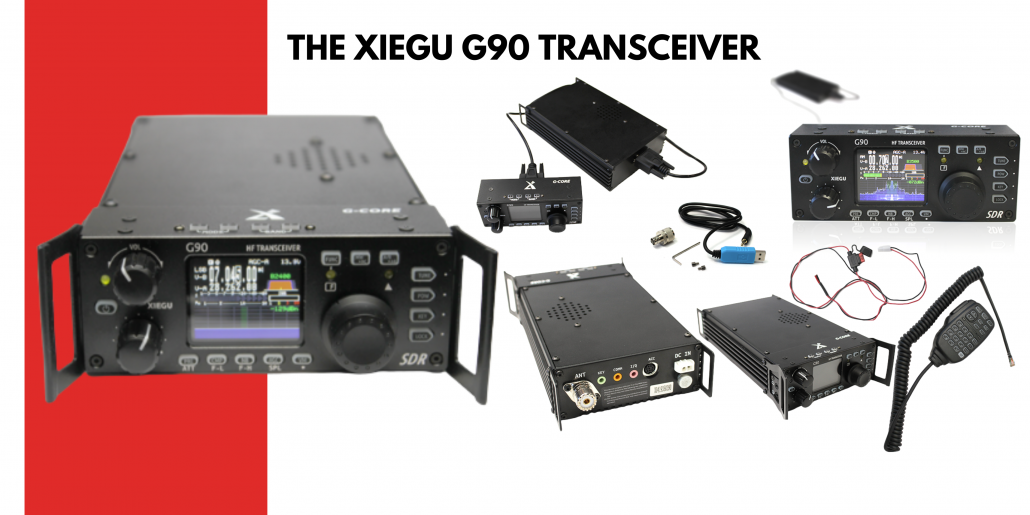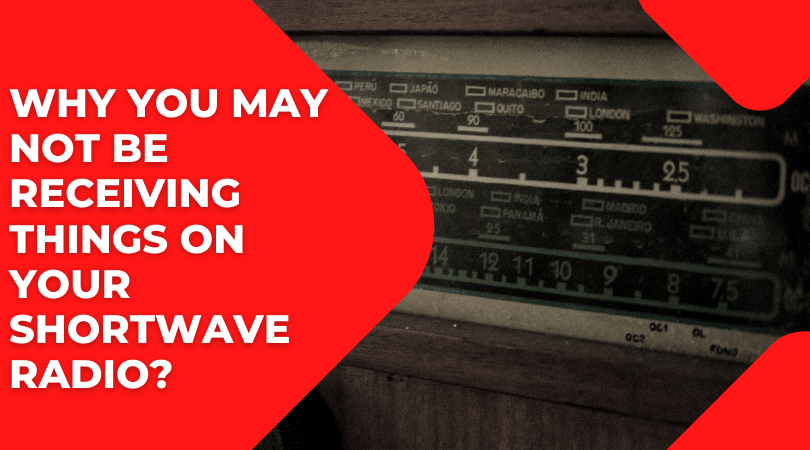
You just got your new radio. You excitedly unbox it and put in your Tecsun batteries, you turn it on, and there’s the sweet sound of….. Silence 🙁
What could be wrong? Is my radio broken?
Chances are it is not broken, here are several things it may be.
The first one may be noise, yes noise! Unfortunately, every single electrical item in your home emits a frequency, particularly modern items, especially if you live in a densely populated area. There may simply be too much noise dominating your area.
If you have a portable radio you could try troubleshooting it yourself. Simply walk around the home to find where you receive a signal and also where it is being interfered with. We had one customer just the other week who did this and realised the light dimmers were creating interference, light dimmers!! Sometimes it’s the microwave, sometimes it’s a power outlet. Radio signals cannot penetrate the metal walls of your shed, nor the foil-lined roof of your house! Taking the radio outdoors to try and receive a signal is one way of eliminating the effects of interference. If this is successful, the next step is to investigate an external antenna.
The Tecsun Outdoor Shortwave and Medium Wave Antenna is one solution. This gets the receiving ‘element” further away from the noise source, it is then matched to the transmission line and the radio is then fed with a coaxial cable. Compared to a straight piece of wire of the same length, this antenna offers a huge improvement in received signal level. If you do not have room for an external antenna, an “active loop” antenna might be your solution. These can be erected on a balcony or even fixed tothe glass of a window.
Another reason you may not be receiving shortwave is the time of day. Unless the specific broadcast is aimed at Australia, most international shortwave broadcasts will occur during daylight hours for the listening audience. So depending on the broadcaster, this might be in the middle of the night for us shortwave enthusiasts. Check some of the available shortwave radio schedules on the internet to see who is broadcasting when you are listening. In Australia, at this time of year there are many shortwave stations operating around 9Mhz most mornings, by mid-afternoon, many have shifted to 13-18Mhz for the evening.
Time signals are one reliable signal source. They are on air constantly 24 hours a day. Their signals on 10.00Mhz and 15.00Mhz are easiest to hear, and this will confirm the correct operation of your receiver. These signals are also ideal for comparing reception results between antennas. It is also possible to check the signal of a shortwave broadcaster using the Tecsun Radios online SDR. Click here for access.
Perhaps during the time you are tuning there is a geomagnetic storm or a solar flare that may be causing a temporary weakened signal.
It may be that a setting on your radio needs changing. Many radios have a button for “local or DX”. If your switch is on local it may not receive weaker stations.
Experiencing issues setting up your shortwave radio ? Garry at Tecsun Radios Australia is here to help guide you through the troubleshooting process if needed.
It is all part of why we are different here at Tecsun Radios Australia.
In fact with every radio purchase from Tecsun Radios Australia, you receive a listeners guide which includes a very comprehensive and practical guide to locating sources of AM and HF interference! You can view this guide here
The main thing to remember is dont give up ! Shortwave listening is like fishing, you never know what you are going to catch! Equipping yourself with a good receiver and antenna, are the first steps towards being able to regularly enjoy shortwave listening, the only live and uncensored source of international news and events.
One of our most popular portable shortwave radios is the Tecsun PL880. It comes in both the original and the deluxe edition with a stylish and durable hard case to keep your radio safe, shockproof, and moisture-free in storage or whilst traveling.
The top features of the PL880 are digital signal processing on the HF band (in all modes), a quantum leap forward for the reception of weak signals. In addition, the Tecsun PL880 Radio offers 9 user-selectable IF bandwidth settings for communications enthusiasts, and a new long-life lithium-ion battery.
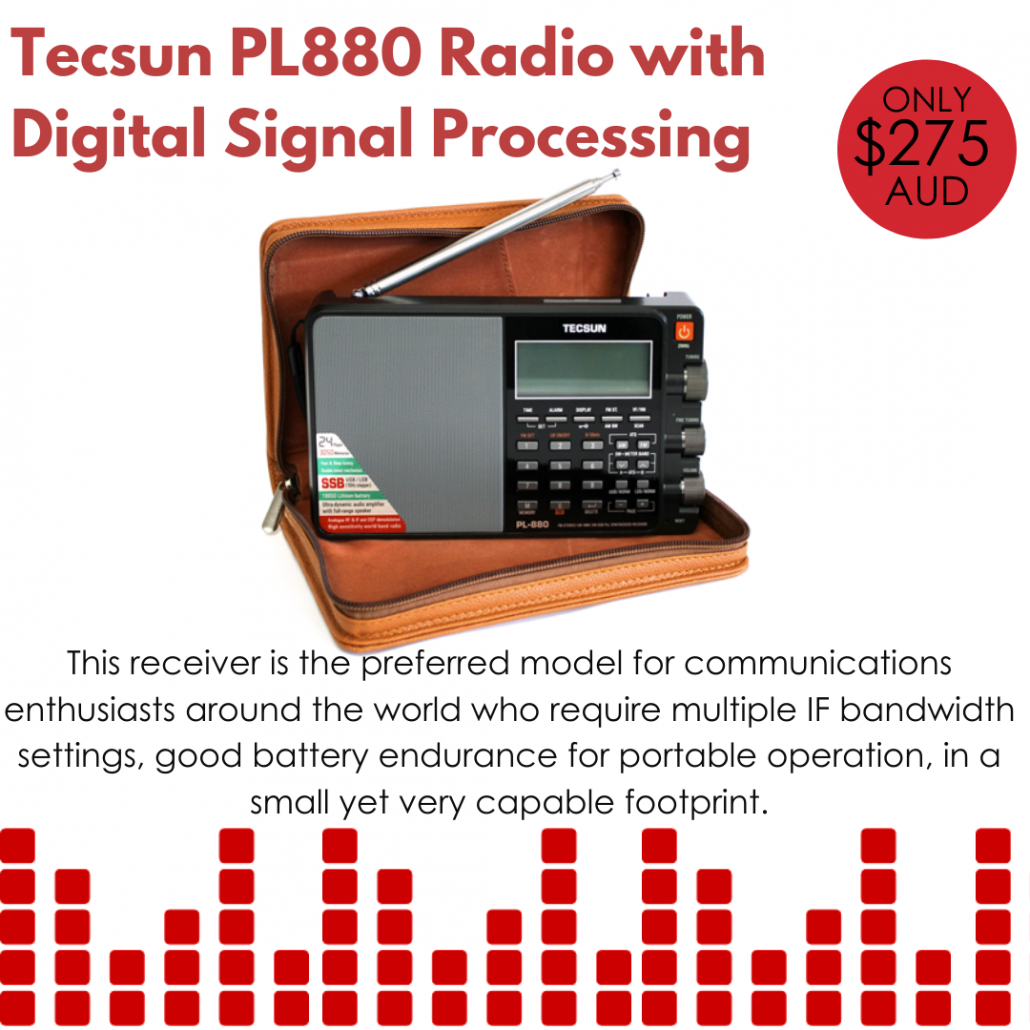
The receiver covers the entire shortwave range (100-29999KHz), Longwave, FM and AM broadcast bands. Receiver sensitivity on HF in the SSB mode is typically less than 1uV. Upper Side Band and Lower Side Band are individually selectable, and there are multiple user-selectable bandwidth settings available for each band.* The receiver is equipped with an external antenna socket to allow connection of an external antenna for the Shortwave bands for enhanced reception.
Speaking of External antennas. To improve your reception we highly recommend the Tecsun shortwave and AM outdoor antenna.
The Tecsun Shortwave and AM Outdoor Antenna significantly enhances the reception of signals in the medium wave (AM) and shortwave antenna bands covering 0.5-30 MHz. The Tecsun Shortwave and AM Outdoor Antenna is based on a 10 metre longwire antenna design but provides significantly improved reception over a basic longwire because it utilises a matching transformer that acts as a balun with a ratio of 9:1. This provides an optimal match between the 500 ohm impedance of the antenna and the 50 ohm impedance of the receiver, greatly increasing the amount of signal provided to the tuner.
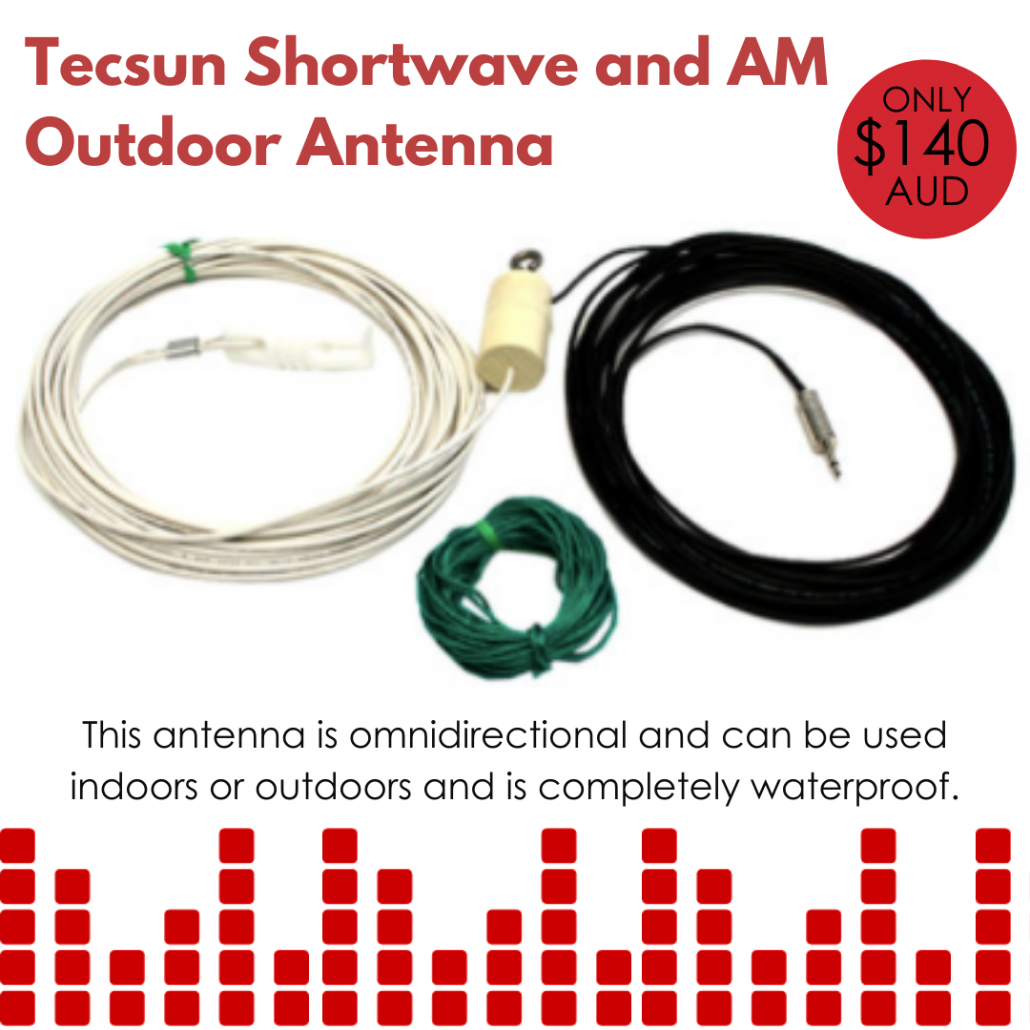
The MLA-30+ The MLA-30+ Shortwave Loop Antenna is an affordable active loop antenna that allows people without the luxury of a large backyard, to use an external antenna to boost the performance of their Shortwave Radio radio and increase the number of radio stations and broadcasts that can be received. The MLA-30+ Shortwave Loop Antenna can be mounted indoors on any non-conductive rod or tube, such as PVC conduit or fibreglass rod (not metal). The loop element of the MLA-30+ Shortwave Loop Antenna has a diameter of 60cm and is connected to the active amplifier housing by two stainless steel wing nuts. For portable operation, the MLA-30+ Shortwave Loop Antenna can be powered by a standard USB powerbank.
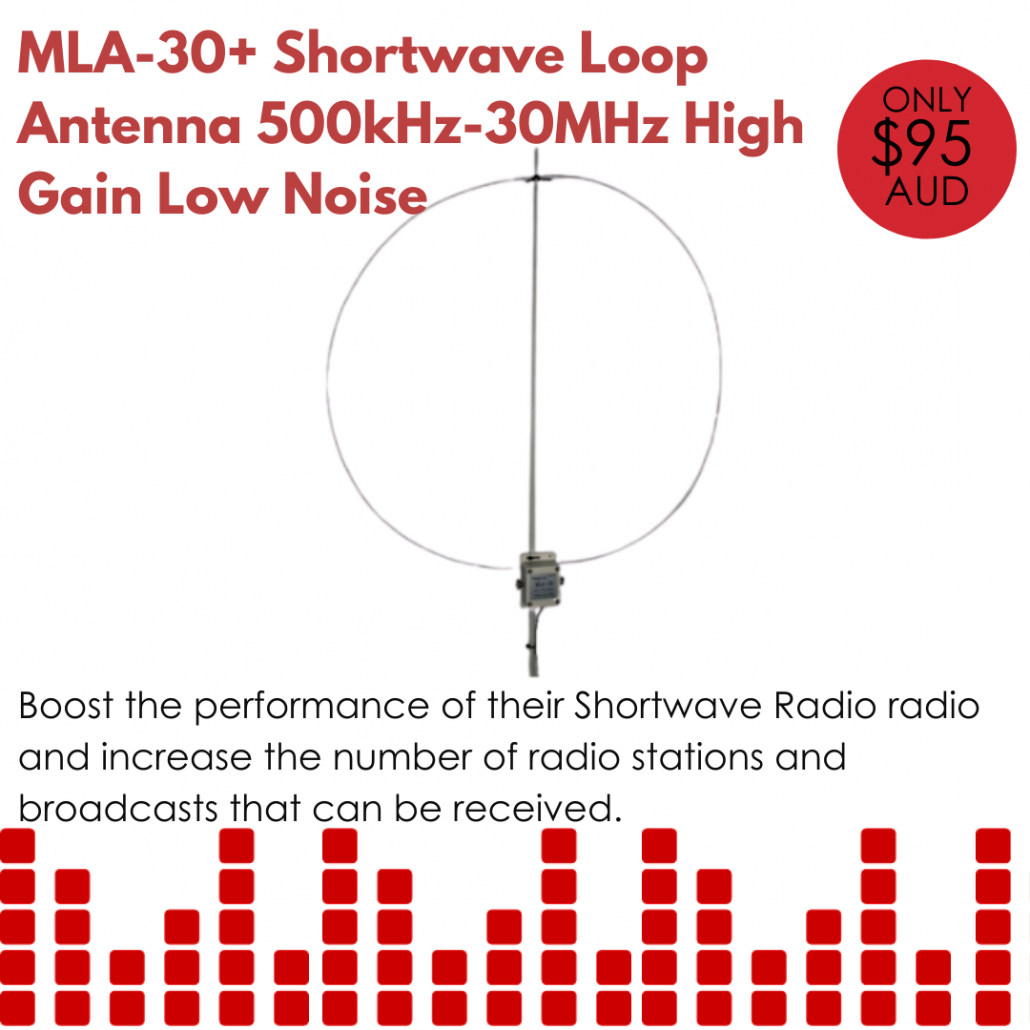
 Picture this, a family huddled around the radio on Halloween, the sun is going down and a spooky story unfolds, everybody listens intently, imagination is working overtime, a bell chimes, there is a scream….
Picture this, a family huddled around the radio on Halloween, the sun is going down and a spooky story unfolds, everybody listens intently, imagination is working overtime, a bell chimes, there is a scream….
Before television, radio was the entertainment of choice in homes across Australia. During the 20th century, radio broadcasts varied greatly, with something for everyone including music shows, talks on politics, gardening and various topics, sporting event coverage, news, and of course serial dramas!
One of the most popular genres broadcast was serial thrillers! Not too dissimilar to many of the thriller podcasts that are popular today. Instead of reading a book one could go about what they were doing while being entertained by this gripping episode broadcast across the airwaves.
Having gained huge popularity in the USA, many thriller scripts were sent over to Australia and adapted locally, featuring well known Australian actors of the time like Ruth Cracknell
On “All Hallows Eve” 1941 A witch’s Tale was broadcast to Australian audiences.
A witches Tale was written especially as a Halloween broadcast and adapted for Australian radio.
The original American series of The Witch’s Tale was significant as the earliest horror program produced for radio. It was first heard in May 1931 out of radio station WOR in New York City.
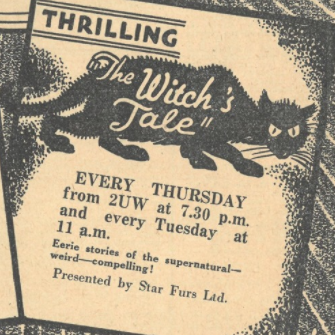
The opening sets the tone of the episode, with the chiming of a bell, an eerie voice informing you that you will hear tales from Nancy the witch of Salem and her cat Satan accompanied by sinister music and sound effects.
The Brisbane Telegraph described the program in 1947 as ‘not the sort of radio program the timid would enjoy listening to when alone in the house after nightfall.
In fact, Newspapers began to receive letters from outraged listeners protesting the broadcasts of such horror and the damaging effect it had on young people.
‘Do parents realise the serious damage that may be done to the minds of their children by the horror story of the radio? One serial broadcast from a local station between 6 and 7pm for children could cause untold mischief to many an innocent child … This mental cruelty is worse than punching a child in the face’ – CT Turnbull, Assistant Secretary of the Newcastle Young Men’s Christian Association, Newcastle Morning Herald, 6 June 1941.
Since we are so close to Halloween, want to hear that very tale from 1941 yourself? You are in luck!!
The National Film and Sound Archive of Australia have provided some Samples of these thriller podcasts/ Click here to listen to A Witches Tale broadcast in 1941 (program duration 26 minutes).
Information courtesy of the NFSA.
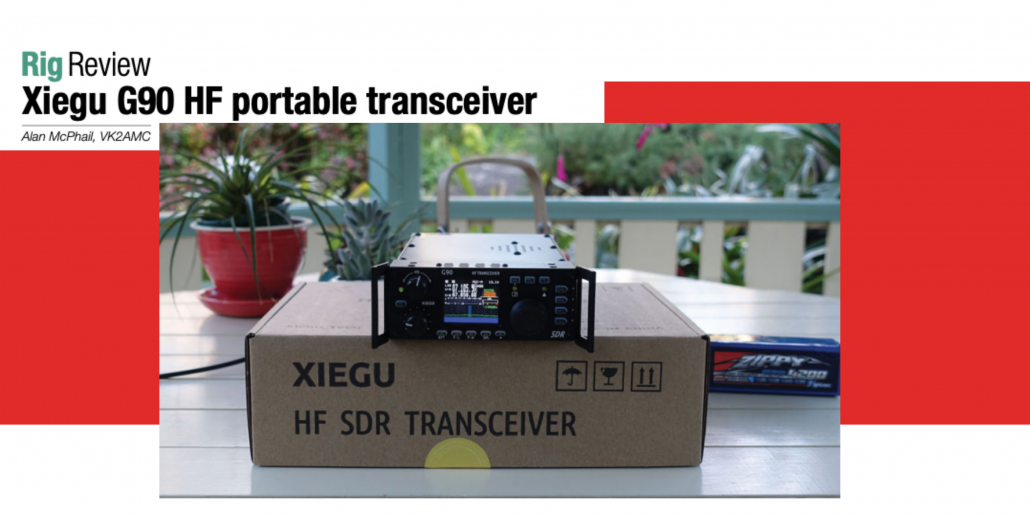
Xiegu G90 HF portable transceiver by Alan McPhail, VK2AMC
We were delighted to receive this fantastic “Rig Review” from fellow radio enthusiast Alan McPhail. His story starts below!!
In 1951, as a four-year-old, I first became aware of amateur radio. My father had been transferred to Townsville by the Department of Civil Aviation and, while sitting in the rear of my parents 1934 Continental Beacon, I saw an HF quad antenna mounted on a tower.
My father explained to me that the antenna was at the home of a radio amateur and it allowed him to talk with people around Australia and the world by radio. This was the beginning of my interest in amateur radio. I have been licensed since 1978, but because of an interesting career, I did not become active on the bands until 2011 and then only occasionally.
After a lightning strike at home in 2015 along with the subsequent fire that burnt through the roof space, the house was severely damaged, contents written off and I lost most of my equipment.
The rebuild of the house took 13 months to complete and the subsequent time to resettle limited my amateur radio pursuits. Our home is on a corner block and the backyard garden is unsuitable for setting up a permanent antenna. I have experimented with dipoles but most often I used a home-built Buddistick antenna (www.buddipole.com).
When I was asked to review the G90 I was reticent to accept the task, not because of my extensive electrical and communications engineering background but because I did not have enough experience as an operator on the amateur bands. I note that in-depth reviews have been done by the RSGB, the ARRL, and on YouTube. The G90 has an active and supportive user group. It was suggested that I should share my user experience of the G90 for Amateur Radio readers.
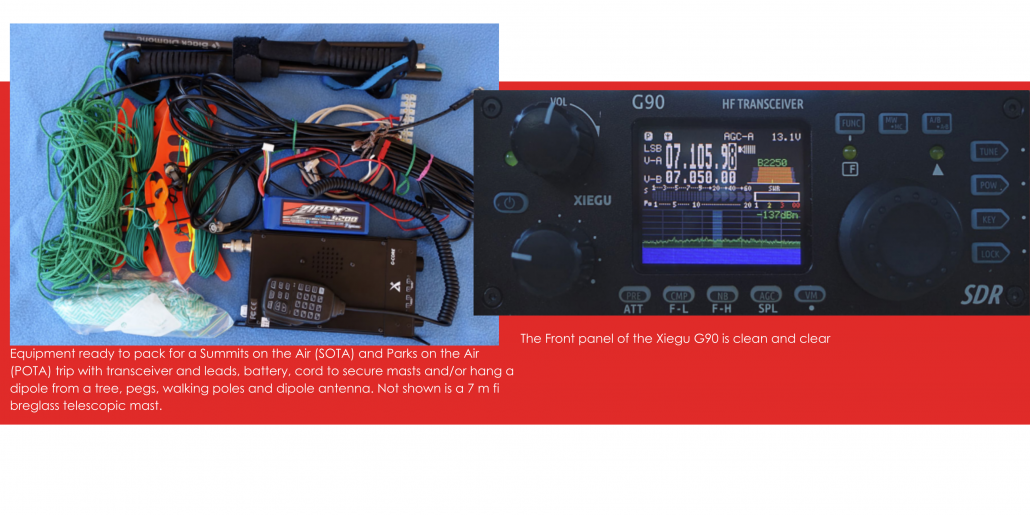
I needed to do some preparatory work to power the G90 and choose an antenna. I fitted Anderson Powerpole connectors to my 4200 mAh LiFePo4 battery and to the battery end of the G90 power cable. I connected the G90 to the battery and a short inside wire antenna. This was sufficient to check that the G90 was working on receive and to become familiar with the basic controls. Initially, I tuned to the ABC frequencies in the broadcast band and experimented with the filter control width and position. The operation manual was easy to follow, and others have improved versions available. Initial observations The colour display is approximately 4.5 cm (1.8”), but it displays a large amount of information very effectively, making the front panel appear larger than it is. On the air Every Friday between 09:00 and 10:00 hours, the Hornsby and District Amateur Radio Club (HADARC) conducts a 40 m net on 7.106 MHz. I thought this would be an ideal occasion to test the G90 on-air. I used a 10 metre length of coaxial cable to connect the transceiver to the antenna. My home-built Buddistick antenna was assembled and slid into the lower three sections of a 7 m-tall telescopic fiberglass mast, increasing the overall height of the antenna by 2.9 m. After installing the antenna counterpoise, I switched on the power to the G90 and tuned to a vacant frequency on 40 m, switched to the AM mode, and pressed the transmit key. The SWR was very high and I checked the antenna connections. Normally, I would adjust the counterpoise length to try to reduce the SWR. However, as I had read good reports about the auto tuner, I decided to activate it.
After a few clicks of changing relays, the SWR dropped to 1:1 and I tuned to the net frequency and joined the net. I spent an hour with the group whose reports on my signal were very encouraging. I could hear most of the participants and received “5 and 9” from several of the participants. Being able to join the group net so quickly on the fi rst setup is a demonstration of how easy the G90 is to operate. The 20 W power output also helped in successfully communicating with more participants than I have previously achieved with my 5 W transceiver. Being able to see the power supply voltage on the display was useful in monitoring my new battery. When switched off, the G90 saves the frequency and mode settings as the start-up values for the next time the rig is turned on. I joined the HADARC Net on a second occasion and I found the controls to be tactile and the panel layout convenient. The receiver audio was of good quality while the ±24 kHz bandwidth spectrum display and SWR scanner were very useful and easy-to-use features. A feature for the hearing impaired in CW mode is the yellow LED that indicates when a signal is being received if there is good reception. The controls There are four pushbutton switches on the top horizontal portion of the front panel, a pair to step up or down the bands, and a pair to cycle through the modes: LSB, USB, CW, CWR and AM. The three front-panel knobs are: • Volume control; a short press will toggle to and from the headphones; • Multi-function Adjustment default steps at 100 kHz and a short press enters the receive mode filter allowing adjustment of the bandwidth and position of the filter. The default operation of the knob can be changed with a long press to change other parameters;
In summary:
The Xiegu G90 is a capable HF QRP transceiver that has easy-to-use – controls with an information-rich colour display. The 20 W output power, adjustable from 1 W, would be appealing to QRP and DX operators, particularly for SOTA and POTA. The standing wave scanner and automatic antenna tuner would also be useful in the field. Above all, I found the Xiegu G90 HF Transceiver was fun to operate.
Read the full article which includes additional tips, information, and even information about the Xiegu G90s portability, click here
The team here at Tecsun Radios Australia are serious about amateur radio and have found the G90 to be fantastic value for a receiver with this power and capabilities on the market.
Thank you the Wireless Institute of Australia for this information.
